Over the last decade, relations between China and Europe have warmed as a result of the Belt and Road Initiative, and the “16+1” mechanism between China and Central and Eastern European (CEE) countries.
Similarly, strategic relations between Croatia and China have continued to grow from strength to strength.
A side effect of these collaborative efforts is that more European countries including Croatia, are taking the opportunity to learn more about Chinese culture and incorporate them into their annual festivities.
Within Chinese culture, there is no celebration more important than the Lunar New Year, taking place from February 1-14 this year.
Celebrations in Croatia
In 2016, the City of Zagreb kick-started the first Lunar New Year celebrations in Croatia by lining Josip Jelacic Square with 80 sculptures of terracotta Chinese warriors.
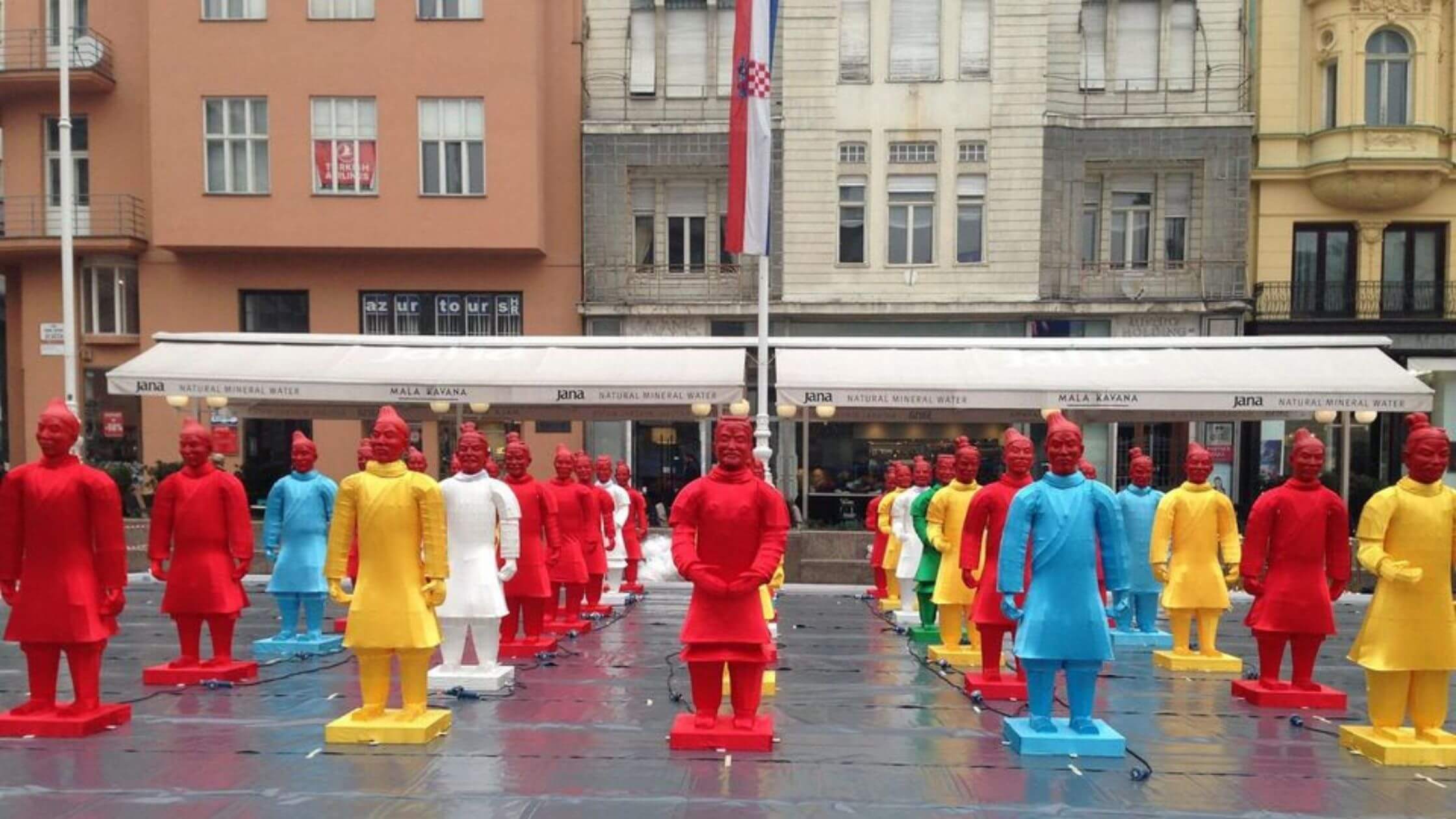
Terracotta Warrior Sculptures 2016, image: Zagreb Tourism Board/Facebook
In 2018 the Zagreb Tourism Board (TZGZ) introduced week-long celebrations before COVID halted further festivities in subsequent years.
But what is Lunar New Year? How is it different from New Year on the 1st of January? And what are some of the traditions involved in the celebration?
Let’s take a brief look at some of the basics.
Lunar New Year 101
The Lunar New Year, also called Chinese New Year (after the world’s largest population of Lunar New Year celebrants), or Spring Festival (春节 Chūn jié). This event is also widely celebrated in places like China, Singapore, Malaysia, Thailand, Cambodia, the Philippines, Taiwan, and Hong Kong.
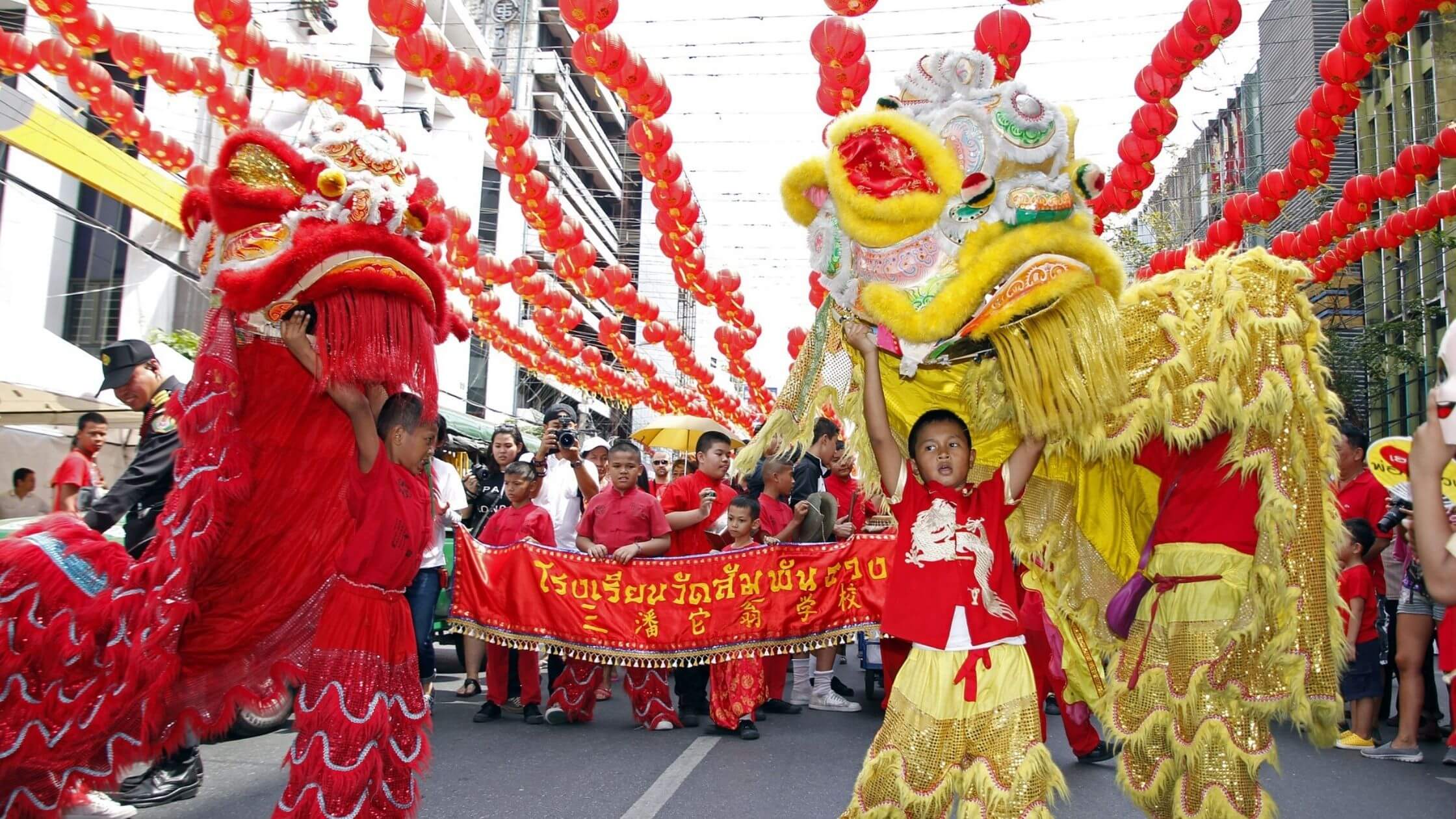
Lunar New Year Celebrations in Thailand, image: Pixabay
In Korea, Lunar New Year celebrations are known as 설날 (Seollal), which lasts 3 days. While in Japan, the Meiji government phased out the use of the lunar calendar in 1873 to be more in line with the West, making celebrations a more muted affair.
Like Thanksgiving and Christmas, Lunar New Year is a time for families and friends to gather, catch up on the past year while consuming copious amounts of food and exchange gifts in the form of money-filled red envelopes (红包, hóng bāo).
Red is an auspicious color for the Lunar New Year, symbolizing happiness, passion, hope, vitality, and luck.
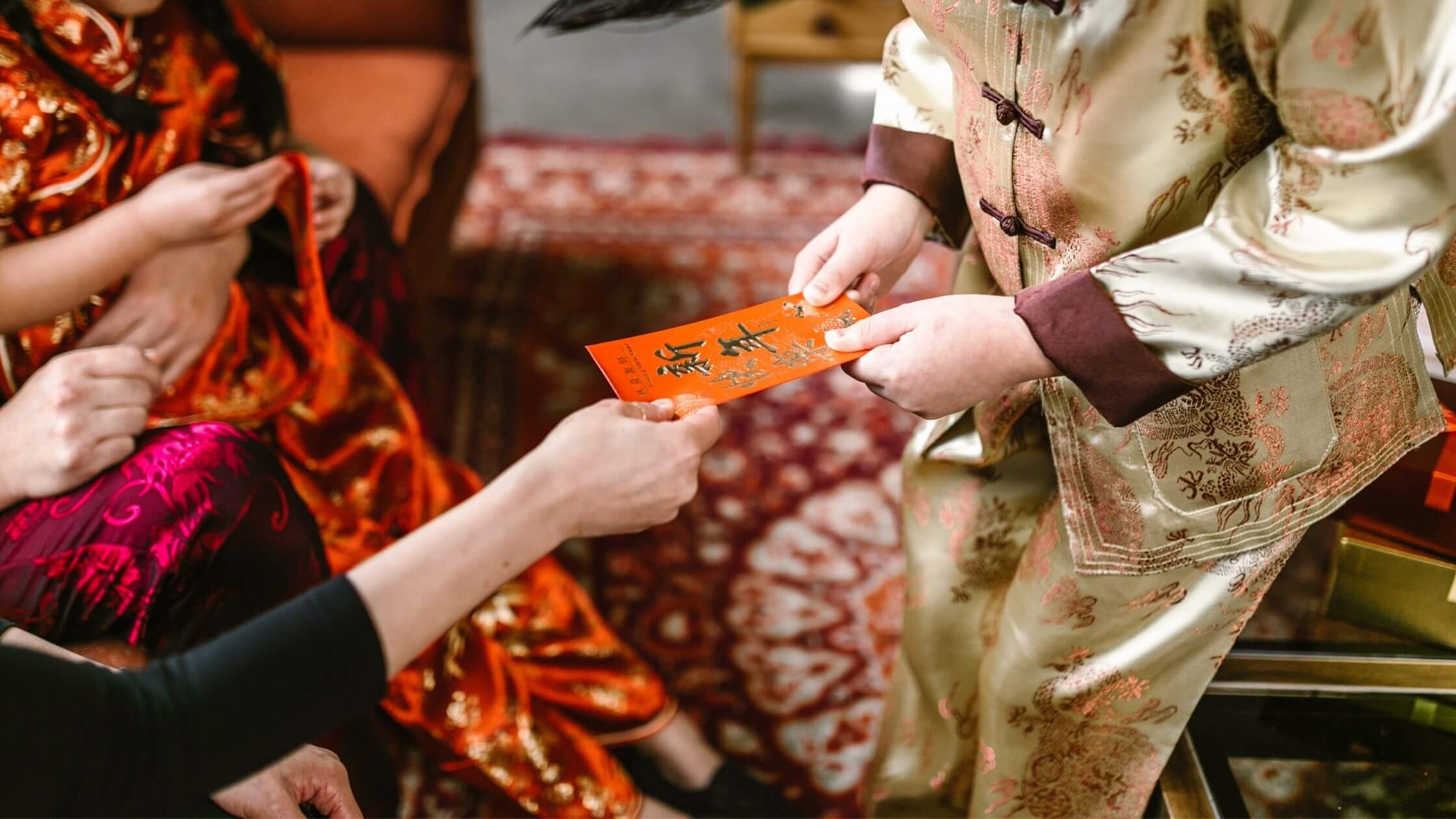
Exchanging of Red Envelopes, image: Rodnae productions/Pexels
Celebrations begin on the first day of the lunisolar calendar, last 14 days, and concludes with the Lantern Festival (元宵节 Yuán xiāo jié). The day before Lunar New Year, families usually come together to partake in a reunion dinner (年夜饭 Nián yè fàn) to begin the festivities.
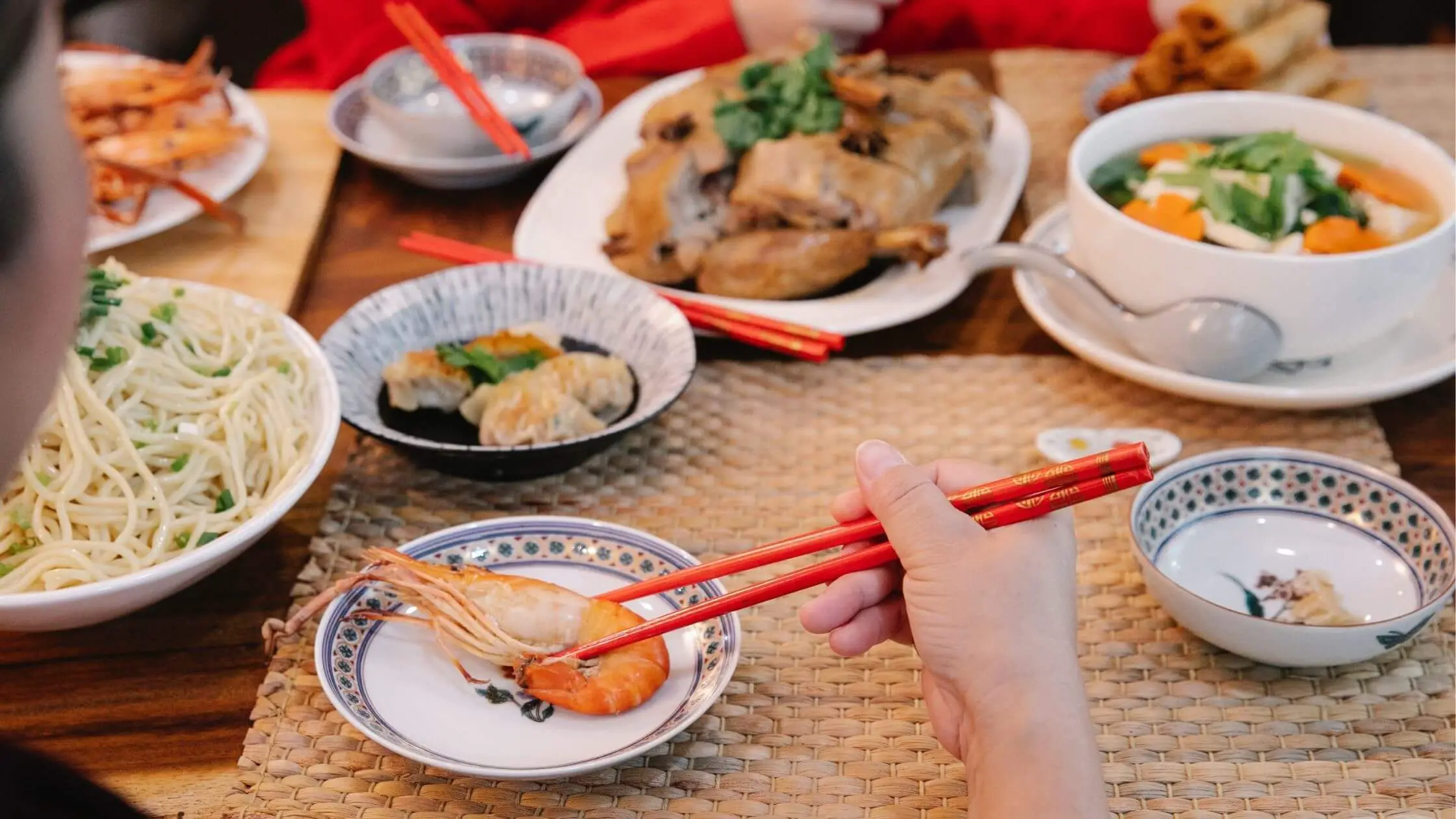
Reunion Dinner, Image: Angela Roma/Pexels
What is the Lunisolar Calendar?
While the Gregorian calendar, the standard calendar used as the primary means of tracking time worldwide – is the official calendar in all countries that celebrate Lunar New Year, the lunisolar calendar still plays an important role in everyday life.
It determines when traditional holidays such as Lunar New Year, Lantern Festival (元宵节 Yuán xiāo jié), Mid-Autumn Festival (中秋节 Zhōng qiū jié) and Ancestors’ Day (清明节 Qīng míng jié).
Briefly speaking, the lunisolar calendar is a hybrid timekeeping method that accounts for both the earth’s orbit around the sun taking 365 days a year (i.e. Gregorian calendar) and the moon’s orbit around the earth (i.e. Lunar calendar).
On average, the moon’s synodic orbit around the earth takes 29.53 days which is then multiplied by the 12 lunar months. This adds up to approximately 354 days a year, 11 days shorter compared to the solar calendar.
To remedy this discrepancy, an additional 13th month is added to the lunisolar calendar once every 3 years. This once in three-year occurrence is known as (农历 nóng lì), or the agricultural calendar.
Since the lunisolar calendar is not in complete sync with the Gregorian calendar, Lunar New Year can fall anywhere within the months of January or February.
Due to this, the first day of Lunar New Year falls on February 1st this year, marking the beginning of the year of the Tiger.
In 2021, it fell on February 12th, welcoming the year of the Ox, while in 2020, January 25th marked the first day of the year of the Rat.
But why are there different animals for each year and what do these animals represent?
Chinese Zodiac
Each year in the lunisolar calendar is attributed to one of the repeating 12-year cycles of animals known as the Chinese zodiac.
In order, these zodiac animals begin with the Rat, followed by Ox, Tiger, Rabbit, Dragon, Snake, Horse, Goat, Monkey, Rooster, Dog and ending with the Pig.
Each animal is also attributed with a set of traits that broadly categorizes the personalities of individuals born in that year.
For example, those born in the year of the Tiger are said to be independent and competitive yet have impetuous personalities. While those born in the year of the Ox are said to be diligent and honest, but with explosive personalities.
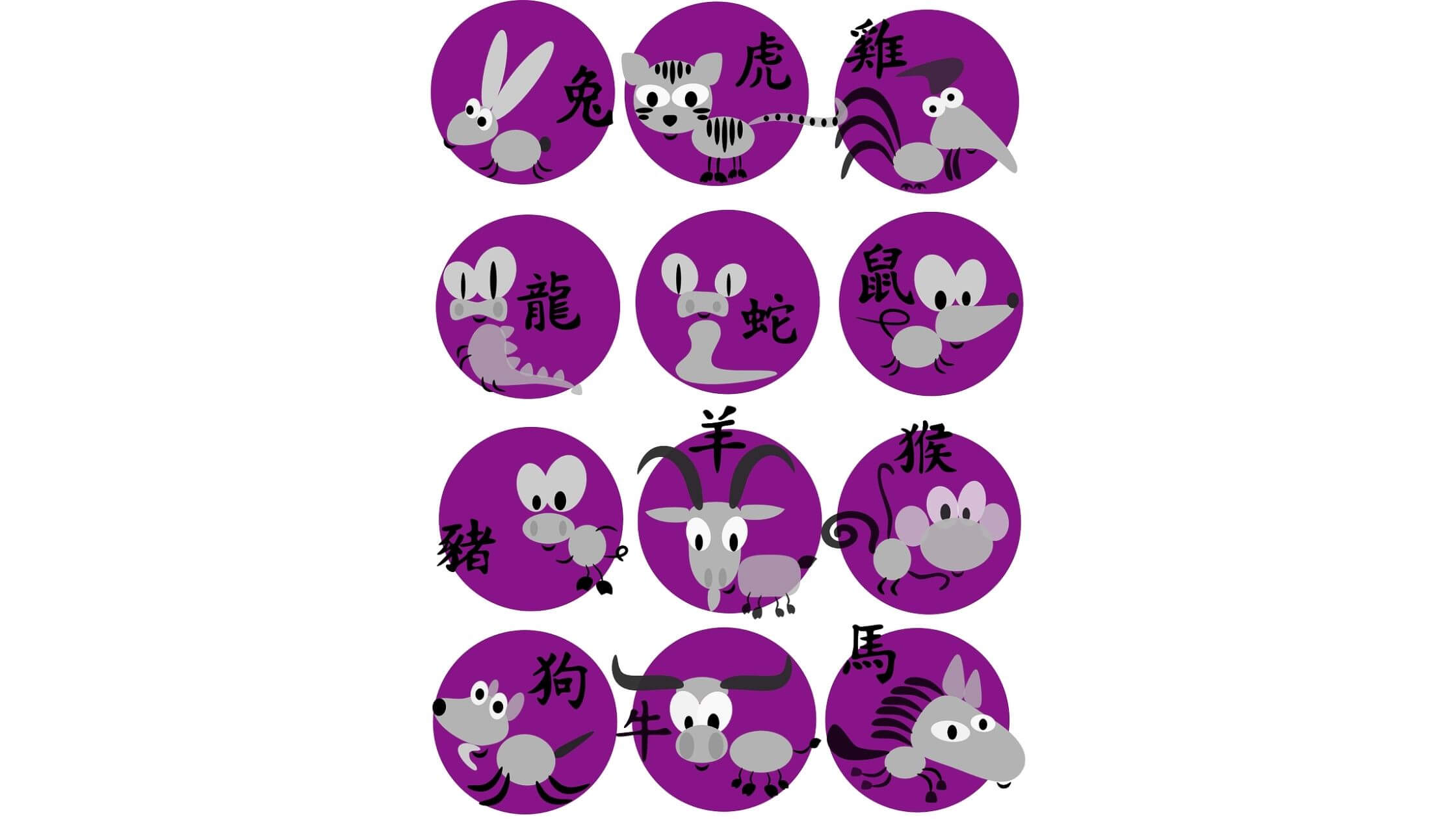
12 Animals of the Chinese Zodiac, image: Pixabay
This zodiac is rooted in a legend dating back to the Qin dynasty in China that ruled over 2,000 years ago. The story goes that the Jade Emperor summoned all the animals within his Kingdom to take part in a great race towards the palace.
The first 12 animals to reach the palace were selected to be part of the zodiac, and the order in which they arrived determined their place.
Lunar New Year thus marks the transition from one animal to the next.
Although this tradition is fading, the Chinese zodiac used to play a vital role in everyday life, determining one’s entire outlook for the year including career, finances, marriage compatibility, health, and more.
So, as we prepare to ring in the second Lunar New Year since the beginning of the pandemic, here’s to a healthy and prosperous Year of the Tiger!
For more, check out our dedicated lifestyle section.









